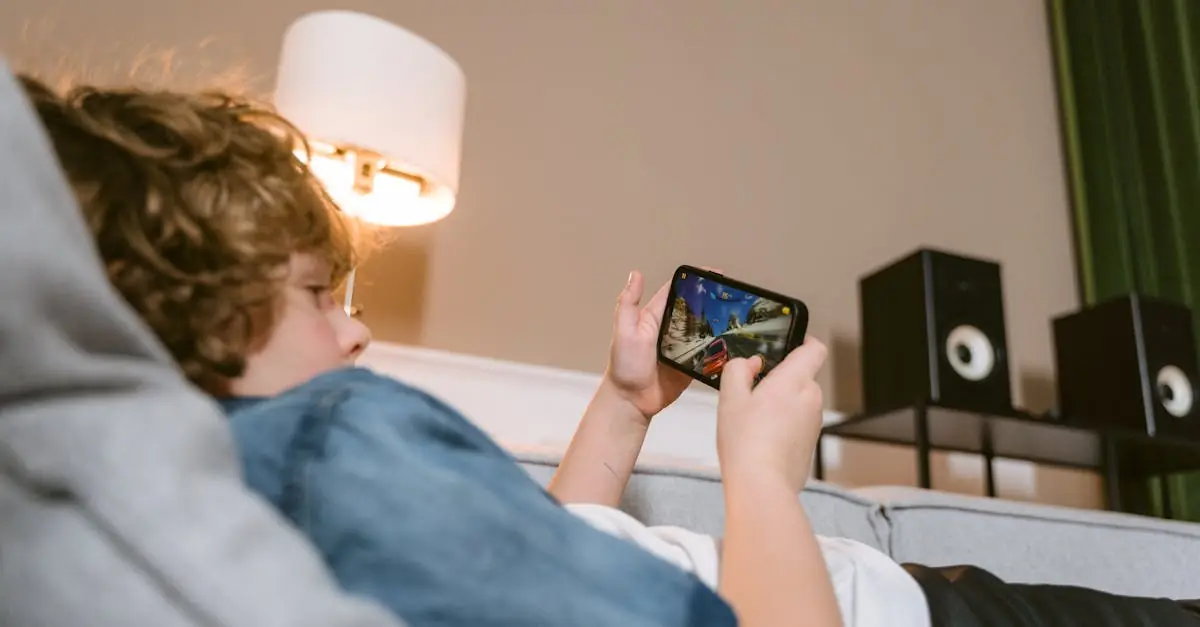Table of Contents
ToggleIn a world where first impressions matter more than ever, the battle between functionality and aesthetics rages on. Picture this: a stunning gadget that looks like it belongs in a sci-fi movie but leaves you scratching your head on how to use it. Or a beautifully designed chair that feels like sitting on a cloud—until you realize it’s a cloud of discomfort.
Finding that sweet spot where functionality meets style isn’t just a luxury; it’s a necessity. Whether it’s fashion, tech, or home decor, the right balance can elevate everyday experiences from mundane to magnificent. Let’s dive into the delightful dance of form and function, where practicality doesn’t have to compromise on flair, and style can still be your best friend. After all, who says you can’t have your cake and eat it too?
Understanding Functionality and Look
Functionality defines how effectively an object serves its purpose. It relates directly to usability and practicality in various areas, including technology and design. Products that emphasize good functionality often incorporate features that enhance user experience. For example, smartphones with intuitive interfaces provide seamless navigation and access to applications. Efficiently designed tools make tasks simpler and quicker, aligning perfectly with user needs.
Look pertains to the aesthetic appeal and visual design of an object. This aspect captivates interest and evokes emotional responses. Effective designs often incorporate colors, shapes, and textures that resonate with users. Fashion items that exemplify a striking look attract attention and inspire trends. Thoughtful decor emphasizes balance and harmony, creating inviting environments. The interplay between aesthetic appeal and functionality drives consumer choices across diverse markets.
The Importance of Functionality

Functionality plays a crucial role in enhancing user satisfaction across various fields. Effective functionality ensures that products fulfill their intended purpose while maintaining ease of use.
How Functionality Impacts User Experience
User experience hinges on how well a product combines functionality with design. Seamless interactions foster engagement and satisfaction, directly connecting intuitive features to a positive perception. For example, a smartphone that offers quick access to applications simplifies daily tasks. Striking a balance between ease of use and design elevates overall enjoyment. Functional elements influence not just usability but also encourage repeat interactions, enhancing brand loyalty over time.
Functionality in Different Settings
Different settings require tailored approaches to functionality. In technology, user-centric designs prioritize seamless navigation to facilitate daily use. In home decor, practical storage solutions blend functionality with stylish design to create organized spaces. Fashion design also emphasizes functionality, ensuring that clothing is not only aesthetically appealing but also comfortable and adaptable. Each scenario showcases that effective functionality resonates with consumers, creating a harmonious experience between usability and visual appeal.
The Role of Look in Design
Look plays a vital role in design, influencing perceptions and decisions. Aesthetic elements captivate attention and evoke emotions, making them crucial for any product’s success.
Aesthetics vs. Usability
Aesthetics often compete with usability in design decisions. Designs that focus solely on visual appeal might sacrifice functionality, while those that emphasize usability can appear drab. Effective designs integrate both aspects. Striking a balance ensures that products are not only pleasing to the eye but also easy to use. User-friendly features enhance the overall experience, making aesthetic choices more impactful. For example, a beautifully designed smartphone that remains easy to navigate can attract consumers drawn to both look and functionality.
Cultural Considerations in Look
Cultural context significantly shapes aesthetic preferences. Different cultures interpret colors, shapes, and symbols in unique ways. For example, white symbolizes purity in some cultures, while in others, it represents mourning. Understanding these nuances affects design strategies, enabling creators to make informed choices. Culturally sensitive designs resonate with their target audience, fostering deeper connections. Additionally, global brands often adapt visual elements to align with regional tastes, ensuring wider acceptance and appeal.
Balancing Functionality and Look
Achieving harmony between functionality and aesthetics involves strategic decisions in design. Designers effectively blend usability with visual appeal, enhancing user experiences across various domains.
Strategies for Successful Integration
Prioritize user feedback to guide design choices. Gathering insights ensures that products meet practical needs while remaining visually appealing. Implementing usability testing verifies that the design facilitates an intuitive experience. Incorporating visual design elements, like color palettes and textures, can improve emotional engagement. Encourage collaboration between designers and engineers to promote a holistic understanding of both functionality and aesthetics. Utilizing materials and technologies that complement both aspects creates cohesive and effective designs.
Case Studies of Effective Designs
Smartphones represent a prime example of balanced functionality and look. Brands like Apple and Samsung have integrated intuitive interfaces with sleek aesthetics, appealing to both tech-savvy users and style-conscious consumers. Home decor brands, such as IKEA, demonstrate this balance through practical furniture solutions that boast minimalist designs. Fashion companies like Nike prioritize comfort alongside eye-catching visuals, attracting a diverse audience. Each of these examples highlights a commitment to merging usability with aesthetic appeal, appealing to consumer preferences while retaining effectiveness.
Striking the right balance between functionality and aesthetics is essential for creating products that resonate with users. The interplay of practical use and visual appeal not only enhances user satisfaction but also drives consumer choices. Designers must prioritize both aspects to foster deeper connections with their audience.
By embracing user feedback and collaborating across disciplines, they can craft solutions that are both effective and beautiful. Ultimately, the successful integration of functionality and look leads to a more enjoyable and fulfilling experience in everyday life.







